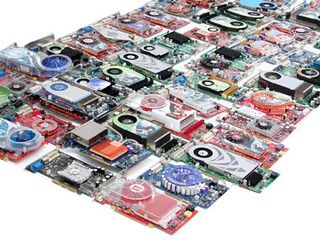The New Graphics
So Where Are We Going?

Direct X 10 is on the horizon, and so is the hardware that will be driving it. While the demand for Direct X 9 hardware is not slipping, and more graphics cards are constantly being launched, there is much interest in this new standard and the hardware that will support it. The strongest points of Direct X 10 are the promises of lower overhead per object and the new rendering component called the geometry shader.
What does all of this mean to the layman? In short, the system will be able to render objects faster and more efficiently. This is a good thing, as games will be able to incorporate this feature to give you more frames per second. That is, until the game developers incorporate more objects into a scene, of course, as we have seen in previews of games such as the Age of Conan, where we will finally be able to cut the limbs of an opponent - like the black knight in Monty Python and the Holy Grail.
Either way, with more objects or faster frame rates in our current titles, we will all be able to get more from our hardware and DX10. Geometry shaders will also aid the rendering process, by allowing objects to be morphed and re-rendered as each frame progresses. Some objects can be born from a single vertex. In the geometry shader, the laws of physics need not apply, as data can be born from nothing and destroyed by the will of the shader program. This also should increase output of the rendering process. Processes that could take several full passes of the vertex and pixel shaders can now be accomplished by circumventing the vertex shader. The object can be recalled and altered in the geometry shader for the next frame.

Join our discussion on this topic
Stay on the Cutting Edge
Join the experts who read Tom's Hardware for the inside track on enthusiast PC tech news — and have for over 25 years. We'll send breaking news and in-depth reviews of CPUs, GPUs, AI, maker hardware and more straight to your inbox.
Most Popular

